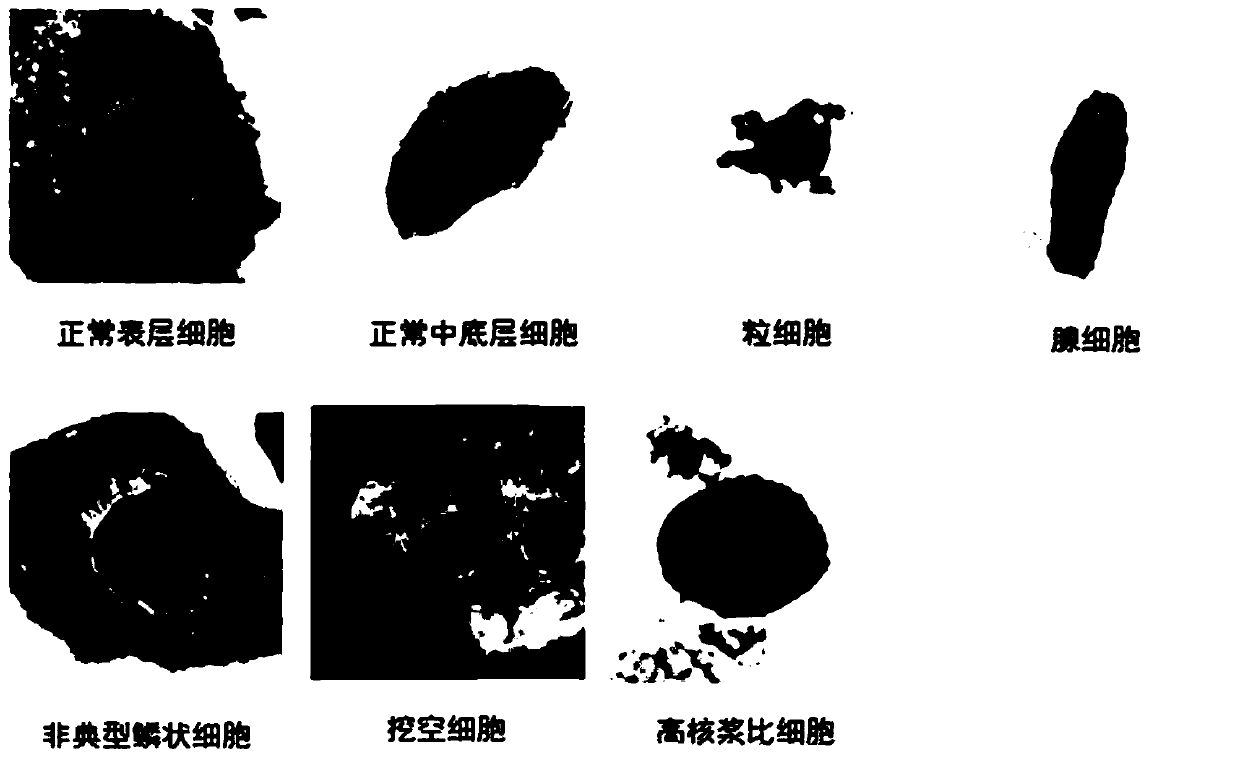Cervical cell image classification method based on graph convolutional neural network
A convolutional neural network and cervical cell technology, applied in the field of digital image processing, can solve the problems of pathologists’ burden and fatigue of film reading, achieve high classification accuracy, improve diagnostic efficiency and accuracy, broad application value and market prospect
- Summary
- Abstract
- Description
- Claims
- Application Information
AI Technical Summary
Problems solved by technology
Method used
Image
Examples
Embodiment Construction
[0030] Such as figure 1 As shown, step 1: prepare training samples; classify the cervical cell images marked by doctors to obtain seven types of samples, the seven types of samples include normal superficial cells, normal middle and bottom cells, granulocytes, gland cells (cervical tube cells), SARS Type squamous cells, koilocytes, high nuclear plasma ratio cells; such as figure 2 shown;
[0031] Step 2: Obtain the 1024-dimensional feature representation of the training sample; remove the last fully connected layer of the pre-trained dense convolutional neural network to obtain a feature extractor, and input each training sample into the feature extractor to obtain a 1024-dimensional feature vector , which is used as the feature representation of the sample.
[0032] Step 3: Construct a sample feature relationship graph; use each class of training samples as a node of the relationship graph. Obtain the mean value of each sample feature as the feature of the node. Then cal...
PUM
 Login to View More
Login to View More Abstract
Description
Claims
Application Information
 Login to View More
Login to View More - R&D
- Intellectual Property
- Life Sciences
- Materials
- Tech Scout
- Unparalleled Data Quality
- Higher Quality Content
- 60% Fewer Hallucinations
Browse by: Latest US Patents, China's latest patents, Technical Efficacy Thesaurus, Application Domain, Technology Topic, Popular Technical Reports.
© 2025 PatSnap. All rights reserved.Legal|Privacy policy|Modern Slavery Act Transparency Statement|Sitemap|About US| Contact US: help@patsnap.com



